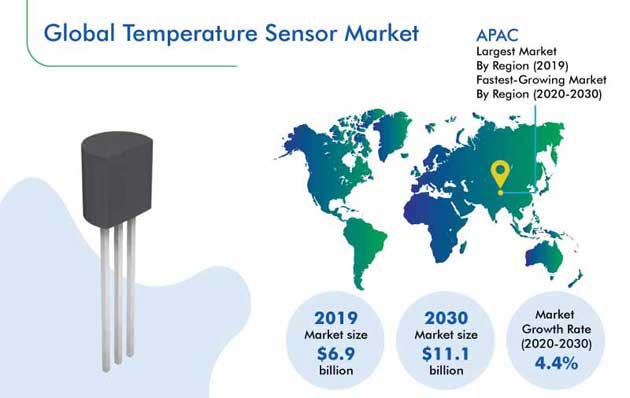Why is Use of Temperature Sensors Soaring in Automobiles?
The mushrooming requirement for temperature sensors in the automotive industry is driving their sales across the world. In this industry, these instruments are used for measuring the temperature of various systems, liquids, and gases within automobiles in order to ensure their proper functioning. Heating, ventilation, and air conditioning (HVAC) systems are the main automobile components in which these sensors are used. Owing to these reason, the booming manufacturing and sales of automobiles, especially in the Asia-Pacific (APAC) countries, such as India, South Korea, and China, are fueling the demand for temperature sensors.
To download free sample pages of this report@ https://www.psmarketresearch.c....om/market-analysis/t
Besides, the surging usage of smartphones is also predicted to fuel the temperature sensor market at a CAGR of 4.4% between 2020 and 2030 (forecast period). According to the estimates of the market research firm, P&S Intelligence, the revenue of the market will rise from $6.9 billion in 2019 to $11.1 billion by 2030. The mushrooming demand for body-worn sensors is also positively impacting the sales of temperature sensors across the world. With rapid advancements in the healthcare industry, these sensors are being increasingly used for monitoring the condition of patients in real time.
In addition, the increasing adoption of the internet of things (IoT) in this industry is also pushing up the requirement for body-worn temperature sensors. These devices are incorporated in custom-made systems in smartwatches for measuring the pulse rate and temperature of the wearer. Furthermore, the growing usage of wearable medical monitoring devices, fitness bands, and smartwatches is also driving the requirement for body-worn temperature sensors. Resistance temperature detectors (RTD), thermistors, temperature IC, and thermocouple are the major types of temperature sensors used around the world.
Out of these, the demand for thermistors is predicted to rise at the fastest pace in the coming years. This will be because of the several benefits provided by these devices such as high sensitivity, faster response rate, low cost, small size, the flexibility to be customized, and greater ease of use. Automotive & aerospace, petrochemical and oil & gas, food & beverage, consumer electronics, pharmaceuticals, industrial, and utilities are the major industries in which temperature sensors are extensively used. Amongst these, the automotive & aerospace industry recorded the highest usage of temperature sensors in 2019.
This was because of the enactment of strict policies by several governments that mandated the adoption of temperature sensors in automobiles. This was done to make automobiles more fuel efficient, mainly because of the surging requirement for reducing the emission of toxic greenhouse gases (GHG). Geographically, the sales of temperature sensors were found to be the highest in APAC in 2019 and this trend will continue in the forthcoming years as well. This will be because of the soaring requirement for processed foods, rising urbanization rate, and booming automobile industry in the region.
Hence, it can be said without any hesitation that the demand for temperature sensors will surge massively in the coming years, mainly because of their growing usage in the automobile industry, which is itself exhibiting rapid expansion, and the mushrooming sales of smartphones and wearable medical devices across the world.
